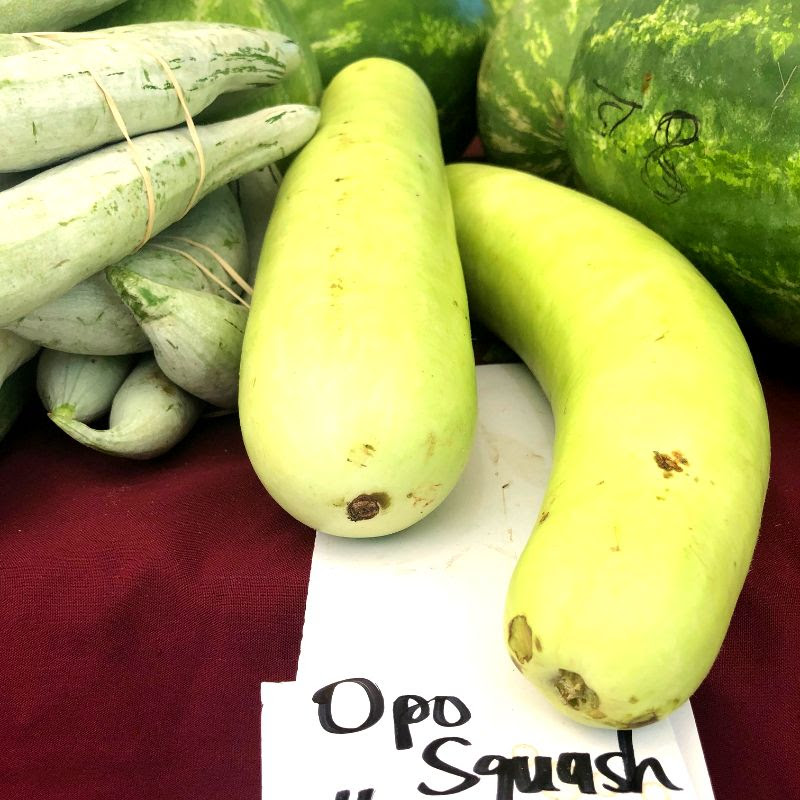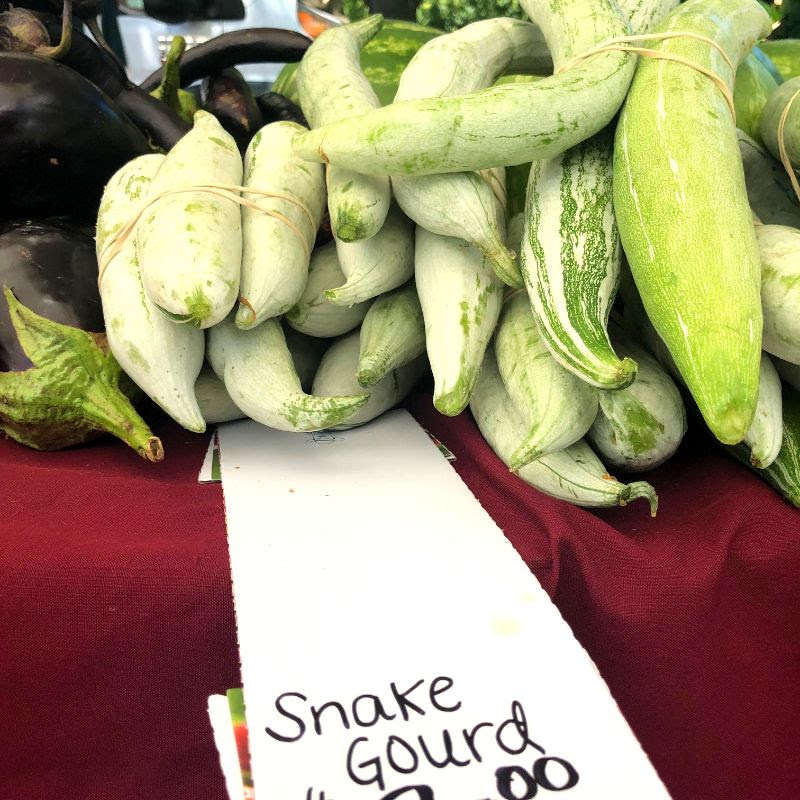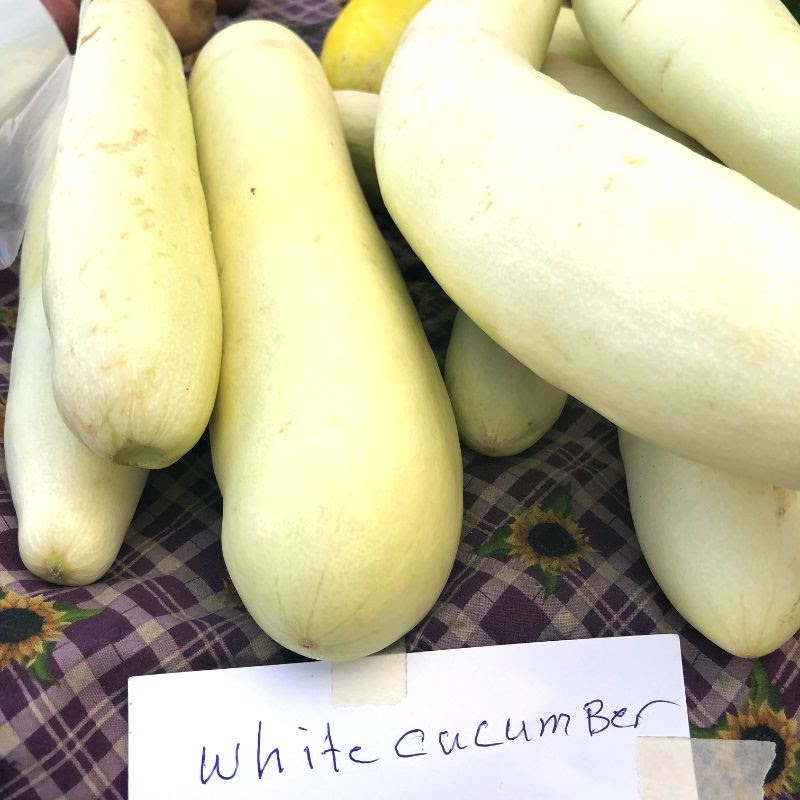One of the best things about a local Farmers’ Market is being introduced to produce you may not see in the grocery store, and being surprised by some of the unusual or unfamiliar produce that grows in the area. If you’ve ever wandered through the farmstand aisles and found yourself wondering, “what the heck is that?” look no further.
This is our second installment of The Unusual Suspects, and we’re back to inform you on some (more) of the commonly uncommon produce you can find at the Chico Certified Farmers’ Market, in season right now!
- 1nopales
- 1oposquash
- 1snakegourd
- 1whitecucumber
Nopales
Nopales or nopalitos are the pads of the nopal catus (commonly called the prickly pear cactus in English). They are tear-shaped, about hand sized, and are often referred to as “paddles.” The nopal catus is native to Mexico and famous for its health benefits due to its high antioxidant, vitamin, mineral, and fiber content.
Nopales can be covered with “eyes” and cactus spines and prickly hairs called glochids. These must be removed by hand or singed away with fire. However, most cultivated varieties of nopales are spineless. Nopales have the flavor and very subtle tartness of asparagus or green beans with a chewy texture. Young, thin pads are the most succulent and delicate flavored. Nopales can be simmered, boiled, sautéed, deep fried, or grilled. They are best served with a tender crunchy texture. Over-cooked nopales will have a slimy texture.
Opo Squash
Opo squash is a baseball-bat shaped member of an ancient gourd family hailing from Asia and parts of Africa. The mature dried squash develops a woody exterior, making it a useful container for water storage and transport, which was its original purpose. The young fruit, however, is tender, sweet and vibrantly green. It tastes very similar to zucchini and is also similar in both texture and water content.
Opo squash is great for sautéing, stir-frying, as a part of soups and stews, or for eating raw in salads. It is often used in chutney and curry. In Central America, the seeds are toasted to add flavor to horchata drinks!
Snake Gourd
Like other gourds, the snake gourd is a member of the pumpkin family and has seeds similar to its cousin the water melon but with a wavy outline. What really makes it interesting is that, like the name implies, the snake gourds are very long and slender, often wriggly like a snake. Some of the largest gourds can grow up to five feet in length, which is why this gourd is often used to make the traditional Australian musical instrument, the didgeridoo!
Usually, the leaves, tendrils, and other leafy parts of the plant are often used as vegetable greens, while the fleshy part can be often seen used in place of cooked tomatoes.The snake gourd can taste bitter raw, but the bitterness disappears when cooked.
White Cucumber
The White Wonder, otherwise known as Albino, Ivory King, Jack Frost, Landreths White Slicing or the long white is an heirloom variety of cucumber introduced in 1893. While they’ve been around for awhile, you don’t often see them at markets and almost never see them in grocery stores.
There are mixed reviews as to how the white cucumber tastes – some say it’s sweeter than the average green cucumber, some say it’s a bit more sour, like it was sprinkled with lemon juice. But all agree that is very crispy! White cucumbers are perfect in salads or for pickling, marinating or simply eating raw.




